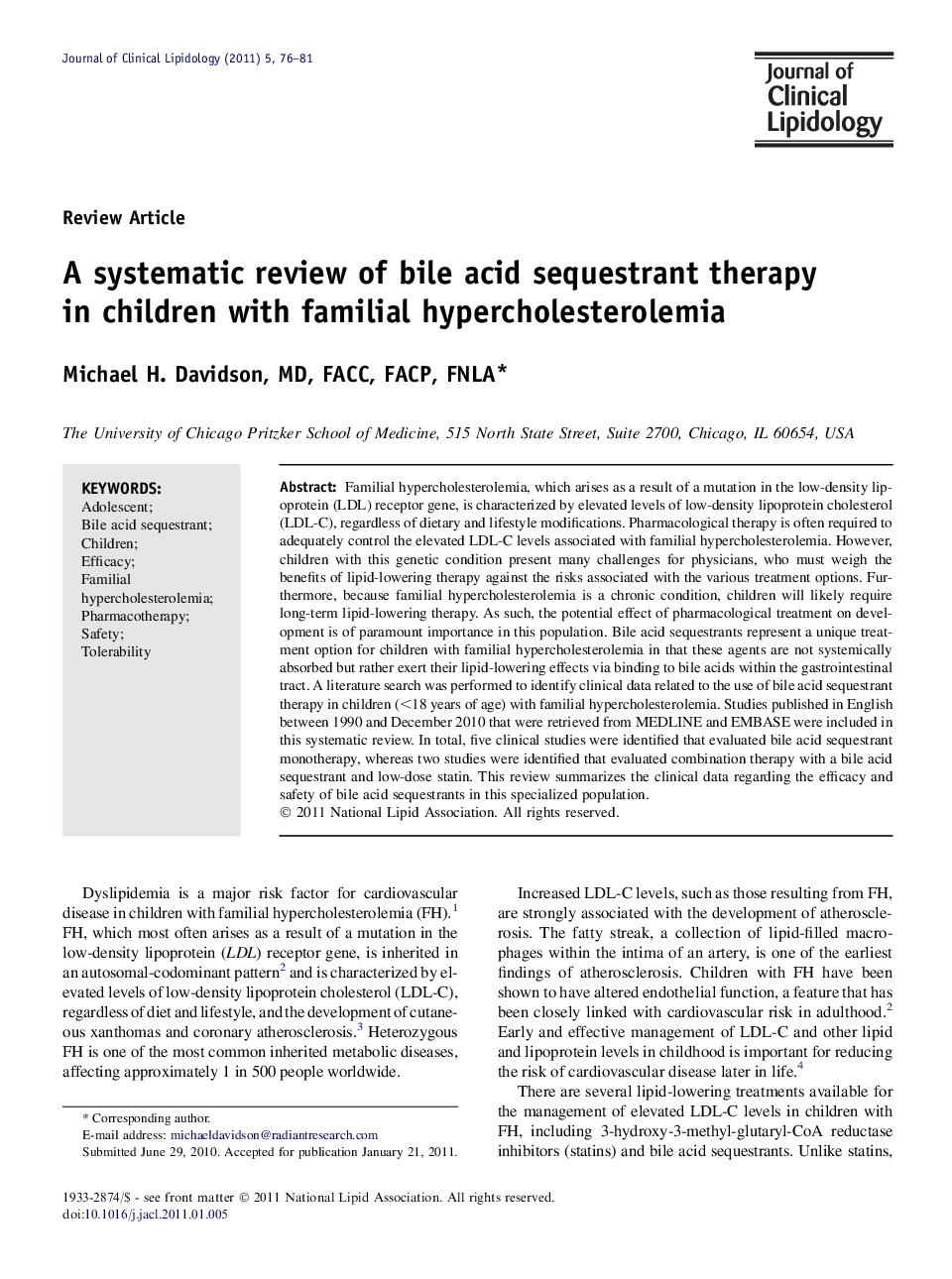| Article ID | Journal | Published Year | Pages | File Type |
|---|---|---|---|---|
| 2966646 | Journal of Clinical Lipidology | 2011 | 6 Pages |
Familial hypercholesterolemia, which arises as a result of a mutation in the low-density lipoprotein (LDL) receptor gene, is characterized by elevated levels of low-density lipoprotein cholesterol (LDL-C), regardless of dietary and lifestyle modifications. Pharmacological therapy is often required to adequately control the elevated LDL-C levels associated with familial hypercholesterolemia. However, children with this genetic condition present many challenges for physicians, who must weigh the benefits of lipid-lowering therapy against the risks associated with the various treatment options. Furthermore, because familial hypercholesterolemia is a chronic condition, children will likely require long-term lipid-lowering therapy. As such, the potential effect of pharmacological treatment on development is of paramount importance in this population. Bile acid sequestrants represent a unique treatment option for children with familial hypercholesterolemia in that these agents are not systemically absorbed but rather exert their lipid-lowering effects via binding to bile acids within the gastrointestinal tract. A literature search was performed to identify clinical data related to the use of bile acid sequestrant therapy in children (<18 years of age) with familial hypercholesterolemia. Studies published in English between 1990 and December 2010 that were retrieved from MEDLINE and EMBASE were included in this systematic review. In total, five clinical studies were identified that evaluated bile acid sequestrant monotherapy, whereas two studies were identified that evaluated combination therapy with a bile acid sequestrant and low-dose statin. This review summarizes the clinical data regarding the efficacy and safety of bile acid sequestrants in this specialized population.
